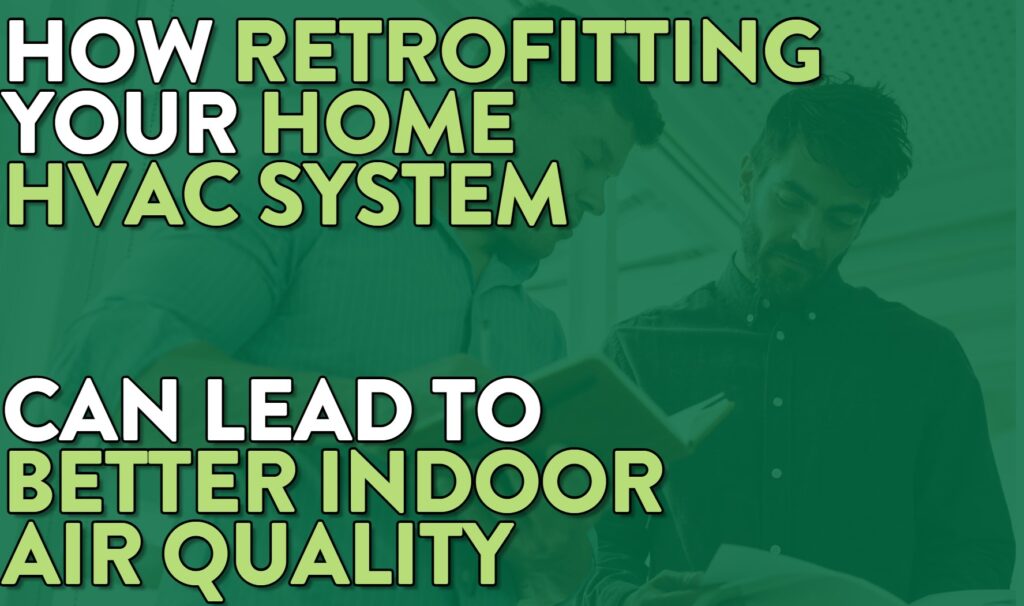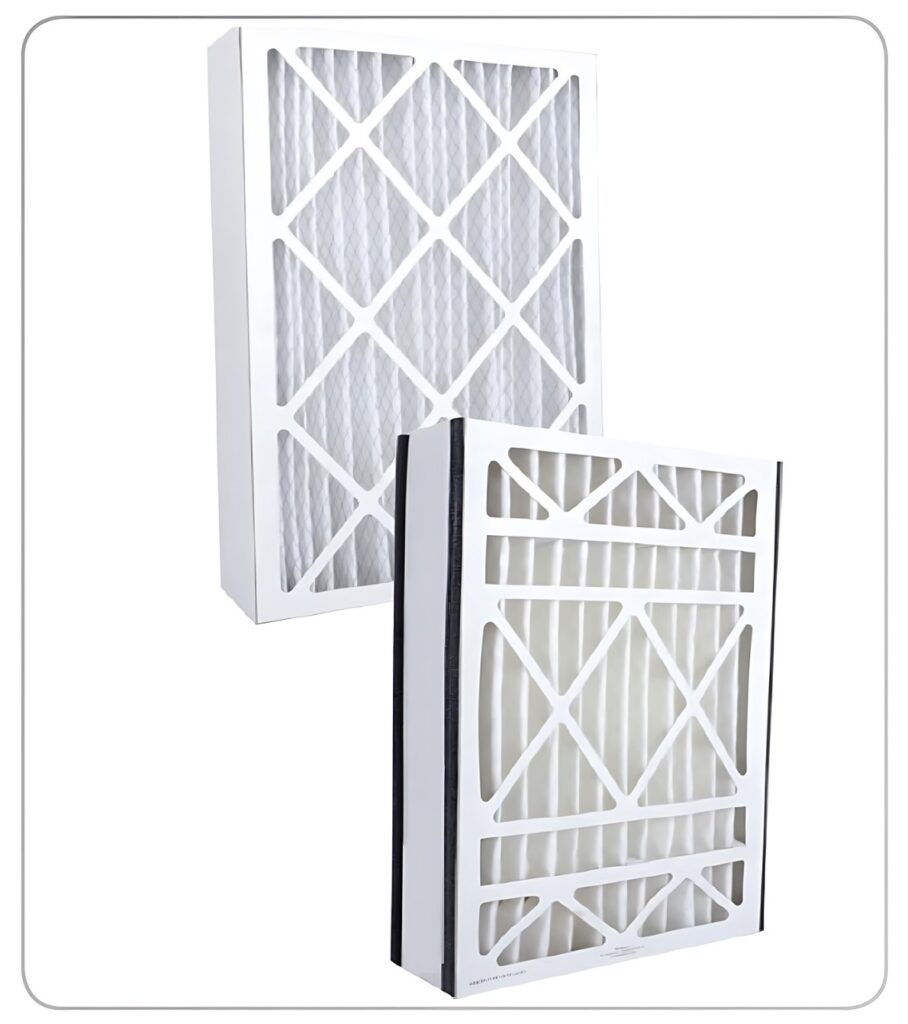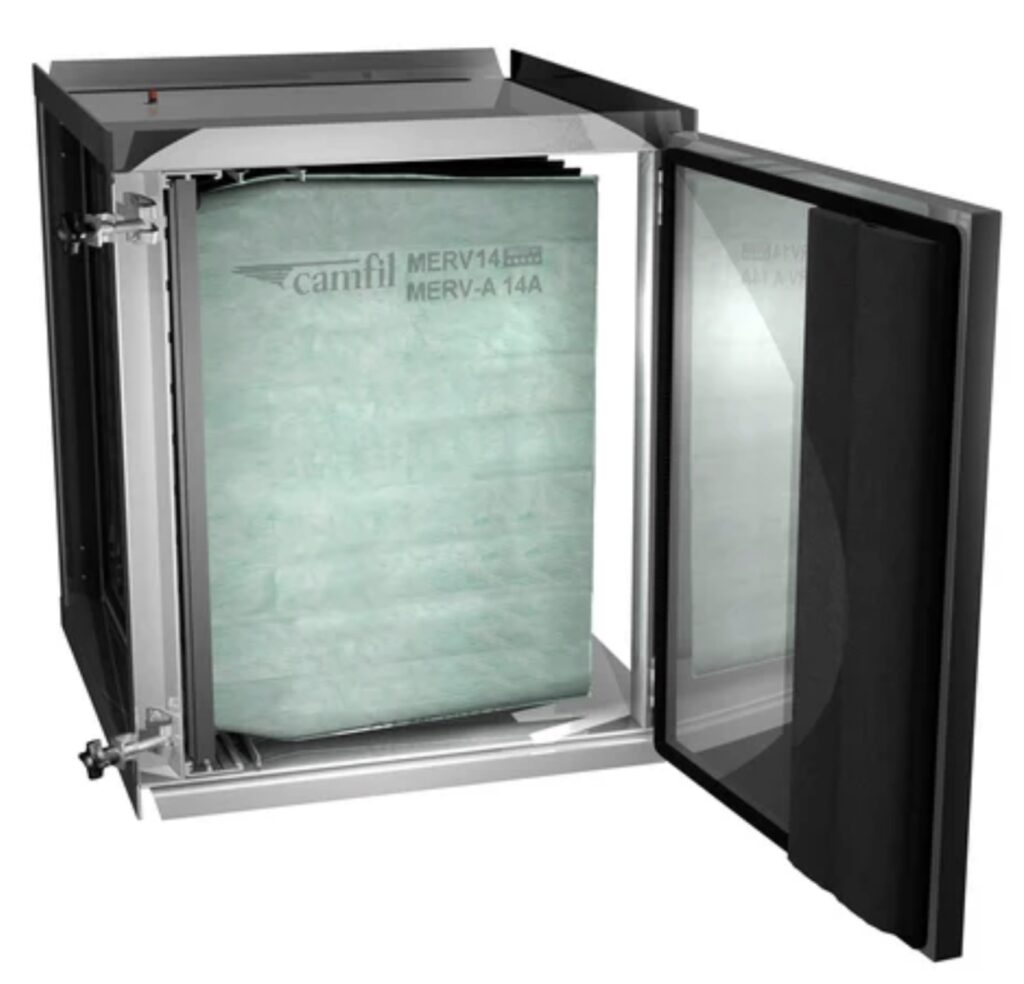Is the process of upgrading and retrofitting residential HVAC systems a difficult venture? It can be a relatively easy and inexpensive process, depending on your existing system design. In this article we will focus on air filter designs and finding the right balance between efficiency and pressure drop, the value of testing by air filter manufacturers, and the advantages of pleated filters and how they provide improved efficiency and longer lifespan compared to common pad filters. Retrofitting strategies, such as upgrading existing residential HVAC systems by installing simple hardware and better air filters will be examined.

How difficult is it to improve on an existing residential HVAC system?
It’s more challenging to retrofit residential HVAC than it is to retrofit air filtration systems in commercial and industrial buildings. This is mainly because residential buildings have smaller fans in their HVAC systems and can’t handle a lot of pressure from an air filter, so when you’re looking at retrofitting any of these applications or improving air filtration, you have to be careful about how high you go in efficiency and what type of filter is utilized.
Higher efficiency typically correlates to higher pressure, but air filters that have lower pressure drop and higher efficiency are available. In an industrial or commercial space, there is usually ample room to accommodate a new frame or access housing. However, in residential units space is more limited, so specific adjustments must be made in terms of air filter design and hardware design.
The Science Behind Air Filter Design and Advancements in Technology- Improving Residential Indoor Air Quality
The main advancement in air filter technology is the development of better synthetic media that uses electrostatic enhancements. These improved media maintain their efficiency better than earlier designs. They don’t lose as much of their electrostatic charge or rely on it as much, which is a significant improvement. This reduced reliance means they don’t decrease in efficiency as much throughout their lifespan, although some decrease is still inevitable.
One key factor that distinguishes high-quality air filter manufacturers from others is testing in-house the media they receive from suppliers. Many manufacturers rely solely on suppliers’ test reports and do not conduct their own tests on the filters after construction. However, it is crucial to test the media and filters after construction to ensure that the filter maintains its efficiency and to establish and maintain product quality.
Choosing the Best Residential Air Filter
In the context of HVAC and air filter design, for most condominiums and apartment buildings, HVAC air handling units (AHUs) are typically designed to accommodate flat pads with a 1-inch track. These flat pads generally have low-efficiency and result in high resistance and low dust holding capacity. However, most AHUs can accommodate pleated filters, which offer higher efficiency and longer life at a lower pressure drop because more media is available. Pleated filter design creates more media space in a smaller area.
The best pleated air filters maximize the pleated design further by allowing particles to penetrate deeper into the available filter area. This leads to more dust holding capacity and increased longevity.
Pad Filters vs Pleated Filters
There are 5-inch thick residential filters designed to last longer, with similar higher efficiencies as pleated filters. These filters can last about a year or a year and a half, and sometimes up to two years in the system due to the design of the pleats, the thickness of the filter, and the quality of the media.
Pad filters are often used in homes and come in 1/2-inch and 4-inch thicknesses. However, they have low efficiency regardless of their thickness due to the filtration principle and their design. They also have a high pressure drop which means frequent filter changeouts to maintain airflow.
Pads are placed inside a frame and typically last three to four months and are available in fiberglass or synthetic materials. This media is also available with a cardboard frame (known as “Throw-away filters”). However, this frame is weak and can be easily damaged.

Wire Support Panels are similar to pads but feature a support wire around them, making them less likely to be sucked or blown into the air handling unit (AHU). However, their efficiency and lifespan remain the same as pads.
Pleated Filters: Maximizing Efficiency and Longevity
Pleated filters use a thick, wax-coated cardboard frame called beverage board, which is water-resistant. The media inside is usually synthetic and can have different MERV ratings. The number of pleats in a pleated air filter affects its lifespan, and filters with a strong backing keep their form better. Filters with a more open media area allow better airflow and have a longer life.
It’s important to consider the construction of the filter media and the electrostatic charge it holds. A thicker media doesn’t always guarantee a longer life, as a filters may collect dirt on the front layer and clog up faster.
Retrofitting your air handling unit: A Path to Better Health, Higher Efficiency and Improved Sustainability
First, if you are currently using a standard pad, your system should already have a one-inch track. If you have a one-inch track and do not want to do a retrofit, you can easily switch from a pad filter or a throwaway filter, to a pleated filter.
Next, if you are currently using a one-inch thick or two-inch filter, but you want to switch to a four-inch or five-inch filter for a longer filter life or slightly higher efficiency, you would need to retrofit the holding frame itself to accommodate the new track inside the system. As long as you have enough space, you can simply remove the old track and install a new track, then simply slide in 5-inch filters.

Example of a GlidePack housing that may be used -after modification- in some existing residential HVAC systems
The last option, which would be the most costly but the best, would be to open up your air handling system or duct and install a 6-inch or 12-inch track to hold a 6-inch or 12-inch filter. With this option, you can get filters with true MERV 13, MERV 14, MERV 15, or MERV 16 efficiency, as opposed to synthetics which can lose their efficiency. What you get is a filter with the same pressure drop as the pleated filter you may be using right now, so the resistance to airflow is the same, but features higher efficiency and two to four times the filter life.
Energy efficiency gains and environmental benefits of retrofitting
In order to achieve energy efficiency, a variable frequency drive (VFD)-controlled fan is necessary, which is not typically found in condominiums or other residences. However, some homes are equipped with two or three-stage fans. If your unit has a two or three-stage motor, it operates at varying speeds based on requirements, allowing for energy savings. On the other hand, older furnaces with single-speed fans or apartment units with single-speed motors do not promote energy savings. A three-speed motor can increase its speed as more air is needed, resulting in higher energy consumption. Nonetheless, it can be programmed to operate at a lower speed when occupants are not at home.
Buildings which have switched from a flat pad to wire support to a 30/30 Dual 9 can now reduce the changeouts from every two months to changes every year or every year and a half. Along with less maintenance requirements, they achieve energy savings and better air quality.
What are the environmental benefits of retrofitting?
By using a filter that lasts three to four times longer, waste can be significantly reduced. This prevents 50% to 75% of waste from ending up in landfills. There are also carbon emission reductions due to reduced transportation needed for new filters and less transportation needed in the disposal of used filters.
By using a variable speed fan in conjunction with an air filter specifically designed to be more energy efficient while performing at a high level, energy can be saved in the HVAC system.
Air Filter Placement And Better Installation for Optimal Performance
· Infiltration can be reduced by sealing windows and doors, thereby decreasing the amount of outside pollution entering the home
· Generation refers to controlling the release of dirt from carpets, pet dander, and other sources through regular cleaning
· Improving the efficiency of air filtration, without blocking airflow, is crucial for enhancing air quality
· Air pressurization involves bringing filtered fresh air into the home to prevent outside contamination from infiltrating
· Maintaining a consistent number of air changes is important. Continuously running a furnace can enhance air quality by constantly filtering dirt, while periods when the residential unit is shut down result in no filtration efficiency. Additionally, using portable air cleaners in individual rooms can help reduce generation, provide effective filtration in smaller areas, and improve the number of air changes based on the setup.
Additionally, using portable air cleaners in individual rooms can help reduce generation, provide effective filtration in smaller areas, and improve the number of air changes based on the setup.
For residential applications, Camfil offers a wide range of filters with a focus on providing premium products, the highest quality and the lowest total cost of ownership (TCO). Camfil’s 30/30 filter offers MERV 8 efficiency throughout its 4-6 month life. If you prefer a longer-lasting option, there is the 30/30 Dual 9 , which can last up to two years in a residential setting without impacting airflow.
If you need guidance on improving filtration or enhancing air quality based on your specific setup, Camfil provides housings, frames, and assistance with hardware requirements for retrofitting. Many homes utilize single-stage air filtration. If your current housing allows, you can opt for a MERV 13 or MERV 14 filter, which could last 3 to 4 years before needing replacement. Alternatively, for 2-inch or 1-inch track systems, the 30/30 Dual 9 filter is suitable.
How does Camfil differ from other air filter manufacturers?
Camfil distinguishes itself through extensive product research, utilizing comprehensive testing capabilities in testing labs located in Stockholm, Sweden and Riverdale, New Jersey, as well as a fully equipped research center in Sweden to set new industry benchmarks. Camfil also conducts batch testing on materials to maintain the highest standards.
FAQ Section
How does retrofitting improve my HVAC system’s efficiency?
Retrofitting can lead to energy savings, lower operational costs, and a marked improvement in air quality.
What indicators suggest my air filter design needs improvement?
Increased energy consumption, poor air quality, more allergies or symptoms such as stuffed nose, itchy eyes, and frequent filter replacements
Where should I install air filters for maximum efficiency?
Portable air filters should be placed strategically to ensure even airflow distribution and optimal filtration. For HVAC systems, have as many return grills as possible
Why are Camfil products recommended by industry experts?
Camfil products feature high-quality construction, provide the best air quality, and have a commitment to sustainability.
Can retrofitting be a DIY project, or should I engage a professional?
While some aspects of retrofitting can be handled by a person who is handy, it is best to consult an HVAC professional for comprehensive system upgrades.
To find out more about how to retrofit your residential HVAC system, please use this contact form.
About Camfil Canada Clean Air Solutions
For more than 60 years, Camfil has been helping people breathe cleaner air. As a leading manufacturer of premium clean air solutions, we provide commercial and industrial systems for air filtration and air pollution control that improve worker and equipment productivity, minimize energy use, and benefit human health and the environment. Read more about Camfil Canada
##
Media Contact:
Phillip Ilijevski
Camfil Canada Inc.
T: 437-929-1161
